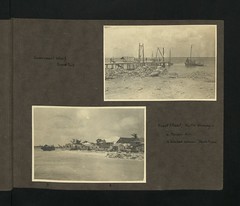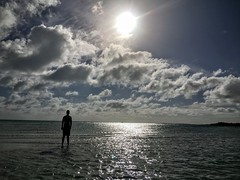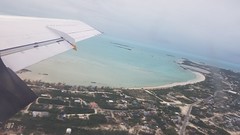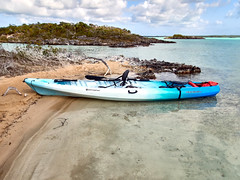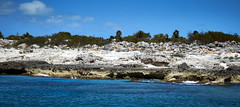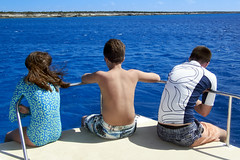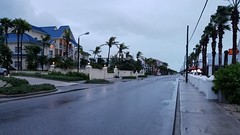 Turks And Caicos Islands
Turks And Caicos Islands
The Turks and Caicos Islands (abbreviated TCI; English: /tks/ and English: /ˈkkəs-ks-kɒs/) are a British Overseas Territory consisting of the larger Caicos Islands and smaller Turks Islands, two groups of tropical islands in the Lucayan Archipelago of the Atlantic Ocean and northern West Indies. They are known primarily for tourism and as an offshore financial centre. The resident population in July 2021 was put at 57,196, making it the third-largest of the British overseas territories by population.
The islands are southeast of Mayaguana in the Bahamas island chain and north of the island of Hispaniola (Haiti and the Dominican Republic). Grand Turk (Cockburn Town), the capital since 1766, is situated on Grand Turk Island about east-southeast of Miami, United States. They have a total land area of .
The islands were inhabited for centuries by indigenous peoples. The first recorded European sighting of them was in 1512. In subsequent centuries, they were claimed by several European powers, with the British Empire eventually gaining control. For many years they were governed indirectly through Bermuda, the Bahamas and Jamaica. When the Bahamas gained independence in 1973, the islands received their own governor, and have remained an autonomous territory since.
Etymology
The name Caicos is from the Lucayan caya hico, meaning 'string of islands'. The Turks Islands are named after the Turk's cap cactus, Melocactus intortus, whose red cephalium resembles the fez hat worn by Turkish men in the late Ottoman Empire.
History
Pre-colonial era
The first inhabitants of the islands were the Arawakan-speaking Taíno people, who most likely crossed over from Hispaniola some time from AD 500 to 800. Together with Taíno who migrated from Cuba to the southern Bahamas around the same time, these people developed as the Lucayan. Around 1200, the Turks and Caicos Islands were resettled by Classical Taínos from Hispaniola.
European arrival
It is unknown precisely who the first European to sight the islands was. Some sources state that Christopher Columbus saw the islands on his voyage to the Americas in 1492. However, other sources state that it is more likely that Spanish conquistador Juan Ponce de León was the first European in Turks and Caicos, in 1512. In either case, by 1512 the Spanish had begun capturing the Taíno and Lucayans as labourers in the encomienda system to replace the largely depleted native population of Hispaniola. As a result of this, and the introduction of diseases to which the native people had no immunity, the southern Bahama Islands and the Turks and Caicos Islands were completely depopulated by about 1513, and remained so until the 17th century.
European settlement
From the mid-1600s Bermudian salt collectors began seasonally visiting the islands, later settling more permanently with their African slaves. For several decades around the turn of the 18th century, the islands became popular pirate hideouts. During the Anglo-French War (1778–1783) the French captured the archipelago in 1783, however it was later confirmed as a British colony with the Treaty of Paris (1783). After the American War of Independence (1775–1783), many Loyalists fled to British Caribbean colonies, also bringing with them African slaves. They developed cotton as an important cash crop, but it was superseded by the development of the salt industry, with the labour done by African slaves forcibly imported from Africa or the other Caribbean islands and their descendants, who soon came to outnumber the European settlers.
In 1799, both the Turks and the Caicos island groups were annexed by Britain as part of the Bahamas. The processing of sea salt was developed as a highly important export product from the West Indies and continued to be a major export product into the nineteenth century.
19th century
In 1807, Britain prohibited the slave trade and, in 1833, abolished slavery in its colonies. British ships sometimes intercepted slave traders in the Caribbean, and some ships were wrecked off the coast of these islands. In 1837, the Esperança, a Portuguese slaver, was wrecked off East Caicos, one of the larger islands. While the crew and 220 captive Africans survived the shipwreck, 18 Africans died before the survivors were taken to Nassau. Africans from this ship may have been among the 189 liberated Africans whom the British colonists settled in the Turks and Caicos from 1833 to 1840.
In 1841, the Trouvadore, an illegal Spanish slave ship, was wrecked off the coast of East Caicos. All of the 20 man crew and 192 captive Africans survived the sinking. Officials freed the Africans and arranged for 168 persons to be apprenticed to island proprietors on Grand Turk Island for one year. They increased the small population of the colony by seven per cent. The remaining 24 were resettled in Nassau, Bahamas. The Spanish crew were also taken there, to be turned over to the custody of the Cuban consul and taken to Cuba for prosecution. An 1878 letter documents the "Trouvadore Africans" and their descendants as constituting an essential part of the "labouring population" on the islands. In 2004, marine archaeologists affiliated with the Turks and Caicos National Museum discovered a wreck, called the "Black Rock Ship", that subsequent research has suggested may be that of the Trouvadore. In November 2008, a cooperative marine archaeology expedition, funded by the United States National Oceanographic and Atmospheric Administration, confirmed that the wreck has artifacts whose style and date of manufacture link them to the Trouvadore.
In 1848, Britain designated the Turks and Caicos as a separate colony under a council president. In 1873–4, the islands were made part of the Jamaica colony; in 1894, the chief colonial official was restyled commissioner. In 1917, Canadian Prime Minister Robert Borden suggested that the Turks and Caicos join Canada, but this suggestion was rejected by British Prime Minister David Lloyd George and the islands remained a dependency of Jamaica.
20th and 21st centuries
On 4 July 1959 the islands were again designated as a separate colony, the last commissioner being restyled administrator. The governor of Jamaica also continued as the governor of the islands. When Jamaica was granted independence from Britain in August 1962, the Turks and Caicos Islands became a Crown colony. Beginning in 1965, the governor of the Bahamas was also governor of the Turks and Caicos Islands and oversaw affairs for the islands.
When the Bahamas gained independence in 1973, the Turks and Caicos received their own governor (the last administrator was restyled). In 1974, Canadian New Democratic Party MP Max Saltsman tried to use his private member's bill C-249, "An Act Respecting a Proposed Association Between Canada and the Caribbean Turks and Caicos Islands" that proposed that Canada form an association with the Turks and Caicos Islands; however, it was never submitted to a vote. Since August 1976, the islands have had their own government headed by a chief minister (now premier), the first of whom was J. A. G. S. McCartney. Moves towards independence in the early 1980s were stalled by the election of an anti-independence party in 1980 and since then the islands have remained British territory. Local government was suspended from 1986 to 1988, following allegation of government involvement with drug trafficking which resulted in the arrest of Chief Minister Norman Saunders.
In 2002 the islands were re-designated a British Overseas Territory, with islanders gaining full British citizenship. A new constitution was promulgated in 2006; however in 2009 Premier Michael Misick resigned in the face of corruption charges, and the United Kingdom took over direct control of the government. A new constitution was promulgated in October 2012 and the government was returned to full local administration after the November 2012 elections.
In 2010 the leaders of The Bahamas and the Turks and Caicos Islands discussed the possibility of forming a federation.
In the 2016 elections, Rufus Ewing's Progressive National Party (PNP) lost for the first time since they replaced Derek Hugh Taylor's government in 2003. The People's Democratic Movement (PDM) came to power with Sharlene Cartwright-Robinson as Premier. She was replaced by Washington Misick after the Progressive National Party won the 2021 general elections.
Geography and environment
The two island groups are in the North Atlantic Ocean about north of Hispaniola and about from Miami in the United States, at . The territory is geographically contiguous to the Bahamas, both comprising the Lucayan Archipelago, but is politically a separate entity. The Caicos Islands are separated by the Caicos Passage from the closest Bahamian islands, Mayaguana and Great Inagua. The nearest foreign landmass from the Turks and Caicos Islands is the Bahamian island of Little Inagua, about 30 miles (48 km) from West Caicos.
The eight main islands and more than 22 smaller islands have a total land area of , consisting primarily of low, flat limestone with extensive marshes and mangrove swamps and of beach front. The tallest peaks in the islands are Blue Hills on Providenciales and Flamingo Hill on East Caicos, both at a modest 48 m. The weather is usually sunny (it is generally regarded that the islands receive 350 days of sun each year) and relatively dry, but suffers frequent hurricanes. The islands have limited natural fresh water resources; private cisterns collect rainwater for drinking. The primary natural resources are spiny lobster, conch, and other shellfish. Turks and Caicos contains three terrestrial ecoregions: Bahamian dry forests, Bahamian pineyards, and Bahamian-Antillean mangroves.
The two distinct island groups are separated by the Turks Island Passage.
Turks Islands
The Turks Islands are separated from the Caicos Islands by Turks Island Passage, which is more than deep. The islands form a chain that stretches north–south. The 2012 …
Hotels Turks And Caicos Islands
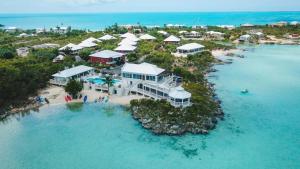 Neptune VillasFive Cays Settlement
Neptune VillasFive Cays Settlement Ocean Pearl - A brand new one bedroom with pool, walkable distance to sunset beachFive Cays Settlement
Ocean Pearl - A brand new one bedroom with pool, walkable distance to sunset beachFive Cays Settlement Point GraceBalfour Town
Point GraceBalfour Town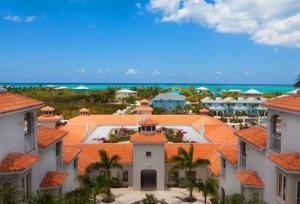 Hotel La Vista AzulFive Cays Settlement
Hotel La Vista AzulFive Cays Settlement Turks Head InneCockburn Town
Turks Head InneCockburn Town CozyhideawayFive Cays Settlement
CozyhideawayFive Cays Settlement Golden Pelican Villa- 5 Bdr Beachfront Home Includes a Sunset Cruise on 7 nightsWhitby
Golden Pelican Villa- 5 Bdr Beachfront Home Includes a Sunset Cruise on 7 nightsWhitby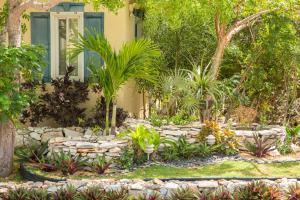 Kokomo Botanical Resort - Caribbean Family CottagesFive Cays Settlement
Kokomo Botanical Resort - Caribbean Family CottagesFive Cays Settlement



